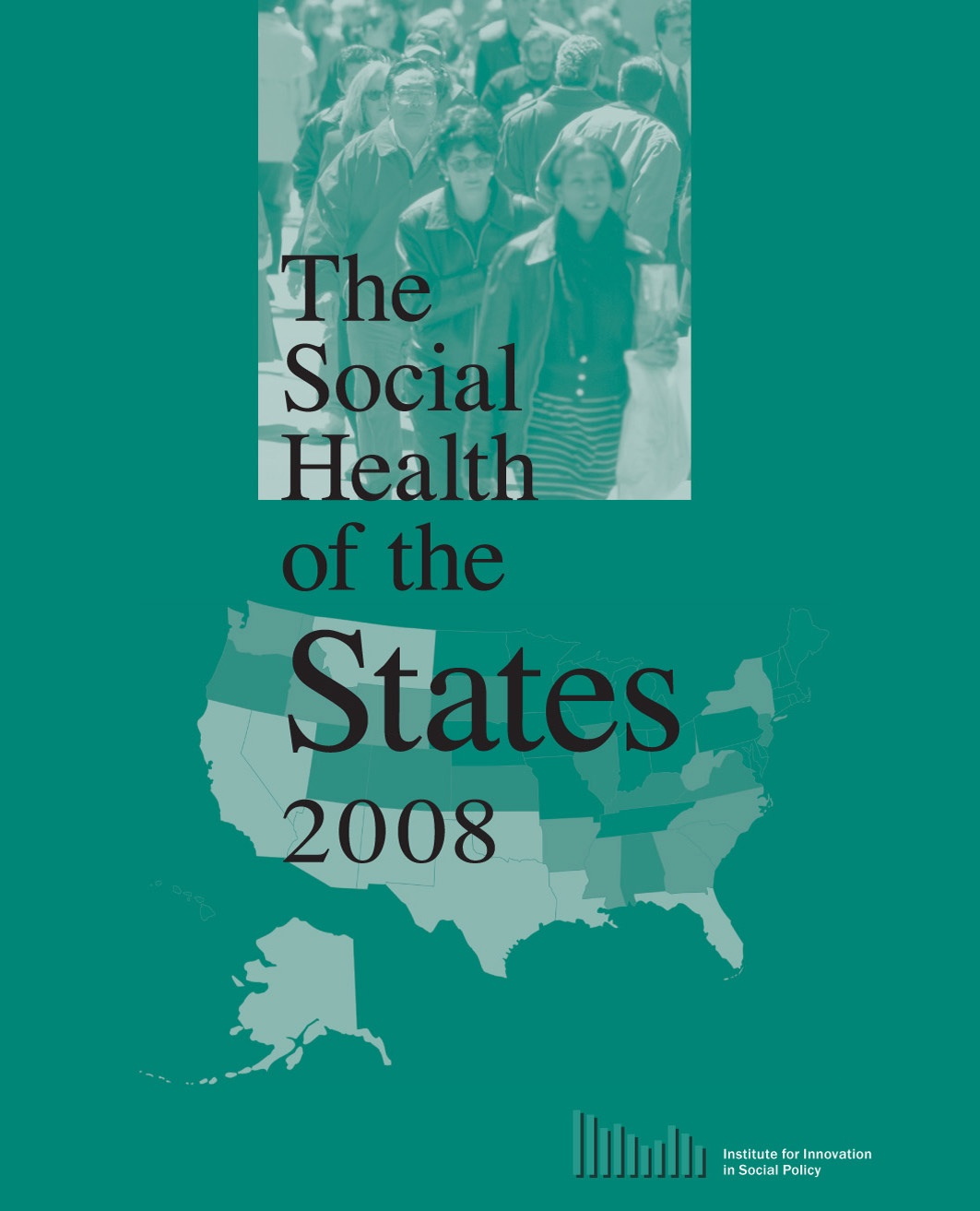THE SOCIAL HEALTH OF THE STATES 2008
In recent decades, the policies and practices of the states have become increasingly important, representing critical testing grounds for innovative approaches to national problems. From health care programs to environmental practices, the states have led the way in developing methods for improving quality of life for all Americans.
The present report, the third in a series, documents the social performance of the fifty states, providing a comparative perspective by which to assess state efforts and national patterns. The states’ performance is measured based on the following indicators:
Youth:
Adults:
Aging:
All Ages:
Child Poverty
Child Abuse
Teenage Suicide
Teenage Drug Abuse
High School Completion
Unemployment
Wages
Health Insurance Coverage
Poverty, Ages 65 and Over
Suicide, Ages 65 and Over
Homicides
Alcohol-Related Traffic Fatalities
Food Stamp Coverage
Affordable Housing
Income Inequality
The report shows that there is considerable diversity among the states. Some are faring well, and have done so over time. Others have lagged behind, and seem unable to catch up. This report not only provides data from the most recent years available but also presents comparative data from the Institute’s earlier study of the social health of the states in 2003.
It is hoped that this report will encourage opinion makers in the fifty states to make careful judgments about where state resources might best go, and which social problems need immediate attention. State governments can build on this report to fashion state-of-the-state messages about their social health. Local media can use these indicators for pinpointing key areas where deeper investigation is needed.
Copies of the report can be ordered from the Institute at: opdycke@earthlink.net
Or you can download a PDF copy by clicking on the cover below.
